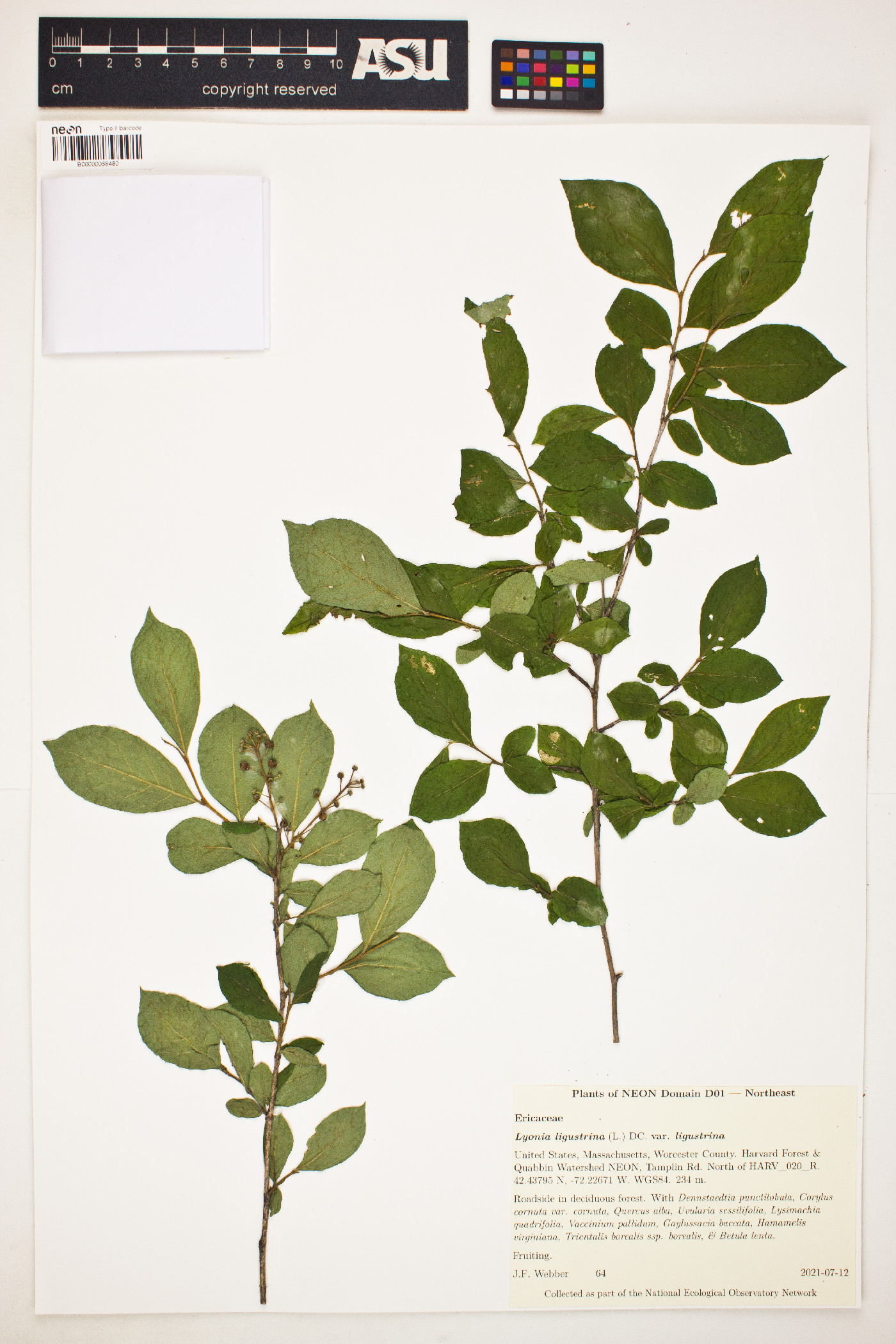|
|
|
|
Family: Ericaceae
maleberry
[Xolisma ligustrina (L.) Britt.] |
Shrubs, (ultimate branchlets spreading), (0.2-)1-4 m. Stems erect, terete to slightly angled. Leaves deciduous to semipersistent; blade narrowly to widely elliptic, obovate, or ovate, (1.5-)2-9.5(-10.5) × 1-4.5(-5) cm, membranous, base attenuate, narrowly to broadly cuneate, or rounded, margins serrulate, plane to slightly revolute, apex acute to acuminate or mucronate, surfaces scattered, multicellular long-headed-hairy, also usually hairy on major veins, not lepidote, intramarginal vein absent. Inflorescences racemes of fascicles or short racemes, to subpaniculate, developing from buds along distal portion of stems of previous year; bracts all inconspicuous or 1-6, foliaceous, 5-30 mm. Pedicels hairy, not lepidote. Flowers: calyx lobes 0.5-1.5 × 0.4-1 mm, sparsely hairy, not lepidote; corolla white, urceolate (base swollen), 2-4(-4.5) × 2-4.5 mm; filaments 1-2 mm, hairy near base, with 2 short spurs. Capsules globose to subglobose, 2-3 × 2-4 mm, apex not constricted, usually long-headed-hairy, otherwise glabrous or hairy; sutures remaining attached to adjacent valve; placentae subapical. 2n = 24. Lyonia ligustrina is most closely related to the eastern Asian species of the genus; it is quite variable in stature, indument, leaf size and shape, and inflorescence structure. Plants of the Appalachian Mountains and northward usually can be readily differentiated from those of the southeastern Atlantic coastal plain, the Gulf coastal plain, and adjacent regions; intermediates occur, especially in Alabama, northern Georgia, North Carolina, and South Carolina.
Deciduous shrub to 4 m; lvs thin, mostly obovate or oblanceolate, 3-7 cm, acute or abruptly acuminate, very minutely serrulate; petioles 2-4 mm; umbelliform clusters mostly 2-8-fld, very numerous, forming a panicle at the end of the branches of the previous year; sep broadly triangular, 1-1.5 mm; cor globose or broadly ovoid, 3-5 mm; stamens with a pair of short spurs near the junction of the anther and filament; fr subglobose, 4 mm thick. Swamps and wet soil; Me. to N.Y., O., Ky. and Ark., s. to Fla. and Tex. June, July. (Xolisma l.; Arsenococcus l.) Foliage, bracts, and pubescence variable. Gleason, Henry A. & Cronquist, Arthur J. 1991. Manual of vascular plants of northeastern United States and adjacent Canada. lxxv + 910 pp. ©The New York Botanical Garden. All rights reserved. Used by permission. |
|
|
|


